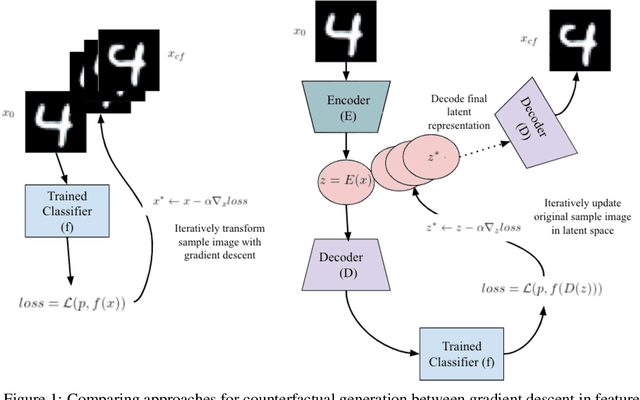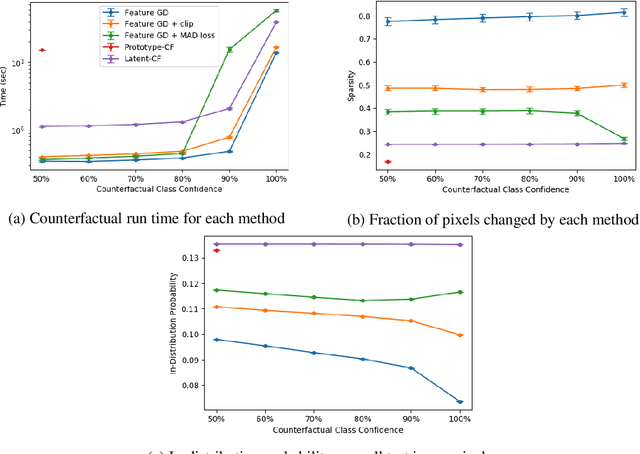Jason Wittenbach
Latent-CF: A Simple Baseline for Reverse Counterfactual Explanations
Dec 16, 2020



Abstract:In the environment of fair lending laws and the General Data Protection Regulation (GDPR), the ability to explain a model's prediction is of paramount importance. High quality explanations are the first step in assessing fairness. Counterfactuals are valuable tools for explainability. They provide actionable, comprehensible explanations for the individual who is subject to decisions made from the prediction. It is important to find a baseline for producing them. We propose a simple method for generating counterfactuals by using gradient descent to search in the latent space of an autoencoder and benchmark our method against approaches that search for counterfactuals in feature space. Additionally, we implement metrics to concretely evaluate the quality of the counterfactuals. We show that latent space counterfactual generation strikes a balance between the speed of basic feature gradient descent methods and the sparseness and authenticity of counterfactuals generated by more complex feature space oriented techniques.
Machine Learning for Temporal Data in Finance: Challenges and Opportunities
Sep 11, 2020


Abstract:Temporal data are ubiquitous in the financial services (FS) industry -- traditional data like economic indicators, operational data such as bank account transactions, and modern data sources like website clickstreams -- all of these occur as a time-indexed sequence. But machine learning efforts in FS often fail to account for the temporal richness of these data, even in cases where domain knowledge suggests that the precise temporal patterns between events should contain valuable information. At best, such data are often treated as uniform time series, where there is a sequence but no sense of exact timing. At worst, rough aggregate features are computed over a pre-selected window so that static sample-based approaches can be applied (e.g. number of open lines of credit in the previous year or maximum credit utilization over the previous month). Such approaches are at odds with the deep learning paradigm which advocates for building models that act directly on raw or lightly processed data and for leveraging modern optimization techniques to discover optimal feature transformations en route to solving the modeling task at hand. Furthermore, a full picture of the entity being modeled (customer, company, etc.) might only be attainable by examining multiple data streams that unfold across potentially vastly different time scales. In this paper, we examine the different types of temporal data found in common FS use cases, review the current machine learning approaches in this area, and finally assess challenges and opportunities for researchers working at the intersection of machine learning for temporal data and applications in FS.
 Add to Chrome
Add to Chrome Add to Firefox
Add to Firefox Add to Edge
Add to Edge